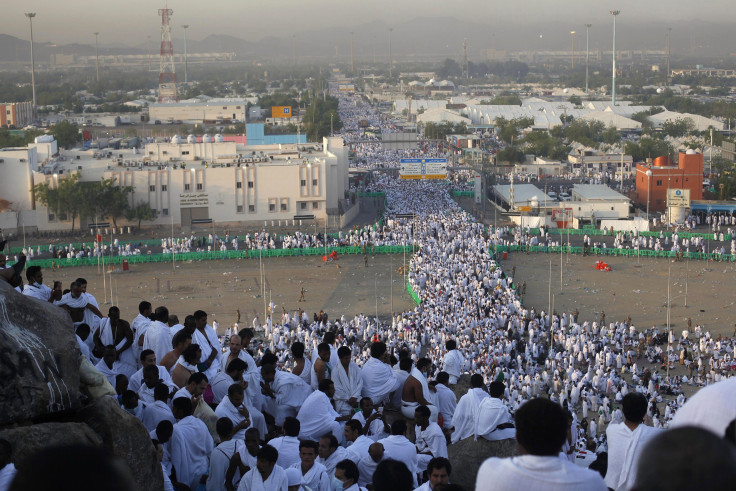What Is Hajj 2015? 11 Facts You Should Know About The Annual Muslim Pilgrimage

The annual pilgrimage to Mecca, called the hajj, is set to begin Monday. Hundreds of thousands of Muslims have entered the Saudi Arabian city in advance of the event, in which pilgrims retrace the steps of prophets and recount their devotion to God. Here are some facts about the hajj:
1. Islam has five pillars, or basic acts, and the hajj is the fifth. It is considered an obligation for every Muslim to perform at least once in their lifetime if they are able.
2. Those who perform the hajj are called hajjis, and some adopt the title in front of their name following their accomplishment of the ritual.
3. Men are required to wrap themselves in two pieces of white sheet. Women remain in a hijab covering their hair and neck, but those who usually wear face coverings are not allowed to do so during the hajj.
4. There is no gender segregation while at the Grand Mosque during the hajj, unlike during many other Muslim rites. Men and women stand side by side in what some have said is meant to show everyone’s equality before God.

5. Muslims can visit Mecca and surrounding holy sites any time of the year, but the hajj falls during the eighth and the 12th of the month of Dhul Hijjah, the last month of the Islamic calendar. The ritual at any other time of the year is called “umrah.”
6. The height of the hajj falls during the Islamic festival of Eid al-Adha, a time when Muslims commemorate the Prophet Abraham’s willingness to sacrifice his son.
7. A median of 9 percent of Muslims around the world said they made the pilgrimage to Mecca, according to a Pew poll.
8. The hajj has turned into a major industry, as trips can often be pricey. Hajj packages from the U.S. often run upwards of $5,000.
9. Officials have been forced in recent years to limit the number of pilgrims, as more and more people have applied in recent years. More than 3.1 million people performed the hajj in 2013. To accommodate the crowd, Saudi authorities have sought to expand the Grand Mosque, which sits around Islam’s holiest site, the cubelike building called the Kaaba.
10. Many Muslims worldwide have criticized the Saudi government for commercializing and seeking to cash in on the pilgrimage.
11. A crane used to expand the Grand Mosque in Mecca toppled over, crashing through the mosque and killing more than 100 people a week before the 2015 hajj was set to begin.

© Copyright IBTimes 2024. All rights reserved.












